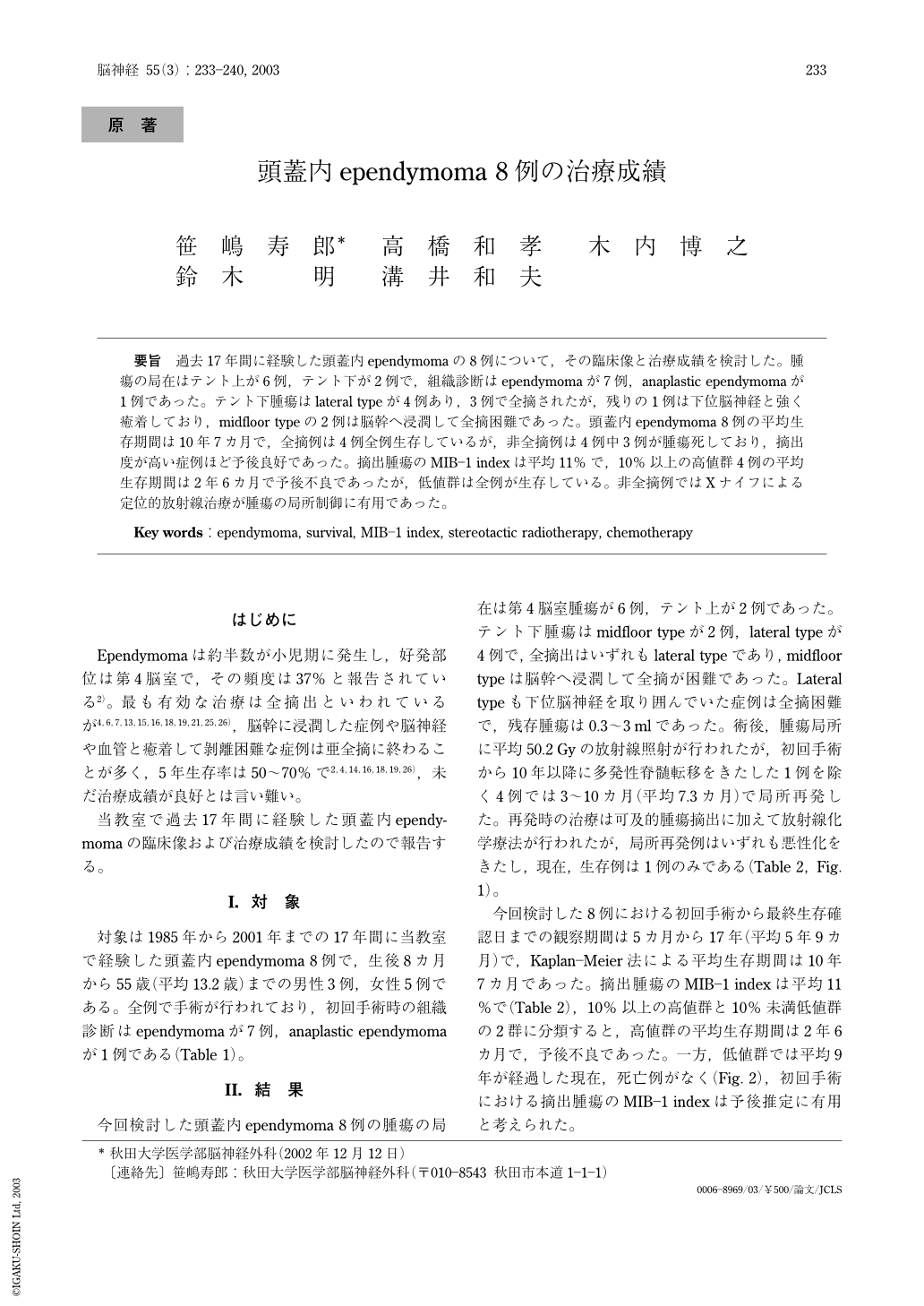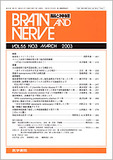Japanese
English
- 有料閲覧
- Abstract 文献概要
- 1ページ目 Look Inside
要旨 過去17年間に経験した頭蓋内ependymomaの8例について,その臨床像と治療成績を検討した。腫瘍の局在はテント上が6例,テント下が2例で,組織診断はependymomaが7例,anaplastic ependymomaが1例であった。テント下腫瘍はlateral typeが4例あり,3例で全摘されたが,残りの1例は下位脳神経と強く癒着しており,midfloor typeの2例は脳幹へ浸潤して全摘困難であった。頭蓋内ependymoma 8例の平均生存期間は10年7カ月で,全摘例は4例全例生存しているが,非全摘例は4例中3例が腫瘍死しており,摘出度が高い症例ほど予後良好であった。摘出腫瘍のMIB-1 indexは平均11%で,10%以上の高値群4例の平均生存期間は2年6カ月で予後不良であったが,低値群は全例が生存している。非全摘例ではXナイフによる定位的放射線治療が腫瘍の局所制御に有用であった。
Between 1985 and 2001, eight patients with intracranial ependymomas underwent surgery at our hospital. The cases included six infratentorial ependymomas, one supratentorial ependymoma and one supratentorial anaplastic ependymoma. Infratentorial ependymomas were classified according to origin and extension. The lateral type tumors originated from the lateral part of the fourth ventricle in four cases. The midfloor type tumors originated from the inferior half of the fourth ventricular floor in two cases. The three totally resected tumors were the lateral type tumors. The remaining one case with the lateral type tumor underwent nearly total resection of the tumor, since the tumor involved lower cranial nerves. All patients with the midfloor type tumors underwent incomplete resections of the tumors, because the tumors infiltrated into brain stem. Lower cranial nerve involvement and brain stem invasion implied incomplete resection and had the poor prognosis.
In intracranial ependymomas, all four patients with total resections have been alive, whereas three of four patients with incomplete resections have died. The mean survival time of all patients with intracranial ependymomas was 127 months from the time of the initial surgery. There were no deaths in the patients with tumors showing MIB-1 index <10%(n=4). The mean survival time of the patients with tumors showing MIB-1 index ≧10%(n=4), was 30 months. The extent of the resection, the age of the patients and MIB-1 index are important factors in the outcome in patients with intracranial ependymomas.
Two representative children aged less than 3 years with the midfloor type tumors were presented. In a patient treated with conventional radiation and chemotherapy, residual tumor repeatedly enlarged within 12 months despite several resections of the tumor. The patient died 32 months after the initial resection. In contrast, the other patient received multidisciplinary treatment including Linac stereotactic radiotherapy(SRT) with a marginal dose of 27Gy in 9 fractions, have been still alive for 45 months after the initial resection. The residual tumor slightly decreased in size and remained stable without evident growth 12 months after SRT. SRT may provide good local control for patients with intracranial ependymomas and have a favorable impact on survival.

Copyright © 2003, Igaku-Shoin Ltd. All rights reserved.


